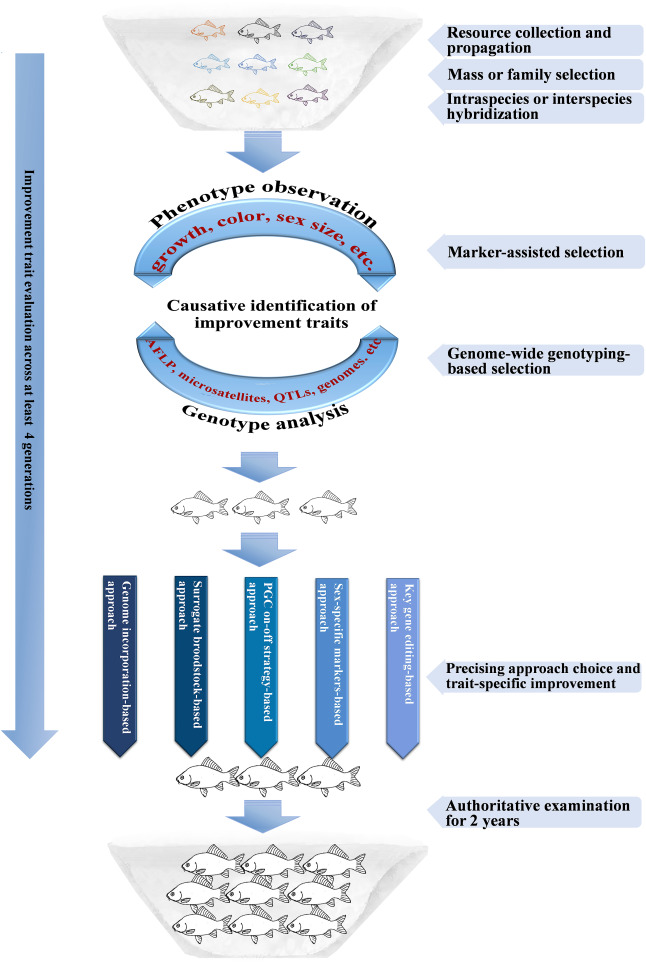
Newsroom
Blueprint Proposes New Genetic and Food Security Guidelines for Aquaculture
The advent of the genome era and the demand for global food safety, has led to significant breakthroughs in the field of fish biology and biotechnology in the past decade. These discoveries have not only seen new theories developed, but provided solid technical support for the modern aquaculture industry and the world's fish supply and food security.
In a review paper published in the KeAi journal Water Biology and Security, a group of researchers from the Institute of Hydrobiology (IHB) at the Chinese Academy of Sciences, set out to reexamine fish biology and biotechnologies in the wake of these ongoing changes. Based on their findings, they have developed a new nine-step blueprint for improving the use of genetics and new breed creation in aquaculture species. In their paper, they also share their analysis of the potential of these new breeding strategies to improve the aquaculture seed industry (development and promotion of aquaculture varieties) and strengthen food security.
Professor Jian-Fang Gui, the investigator who led the study, explains: “The importance of aquaculture for global fish supplies is now widely recognised. Fisheries are the fastest-growing food-producing sector in the world and fish are one of the most promising protein sources for feeding the 9 billion people projected to inhabit this Earth by 2050. In fact, global fish demand looks set to double by the middle of this century. This is, in part, because fish and other aquatic foods provide important nutrients, such as long-chain polyunsaturated fatty acids, vitamins and micronutrients, and their carbon footprint is lower than other forms of animal production.
"However, this growing demand for fish is already putting pressure on supply chains and, in recent years, we have seen the impact of overfishing on fish stocks, with some breeds threatened with extinction. At the same time, there are concerns over the levels of chemicals, such as mercury, and plastic traces found in the fish we eat, and questions over the nutritional value and health of farmed fish. Our goal with this review was to examine and highlight several outstanding advances in burgeoning genome resources, and prompt a rethink of the development goals and future trends in the aquaculture seed industry that are required to meet world fish supplies, and strengthen food security.”
He adds: “Our review makes it clear that theoretical breakthroughs and technological innovations in fish biology and biotechnology are not only frontier scientific issues that should be given more attention, they are also an important driving force for conserving aquatic biodiversity and sustainably developing aquaculture. We believe our blueprint offers a valuable path forward.” (KeAI Communications)

A basic route diagram of genetic improvement and seed industry development in farmed fishes or other aquaculture animals. (Credit: IHB)